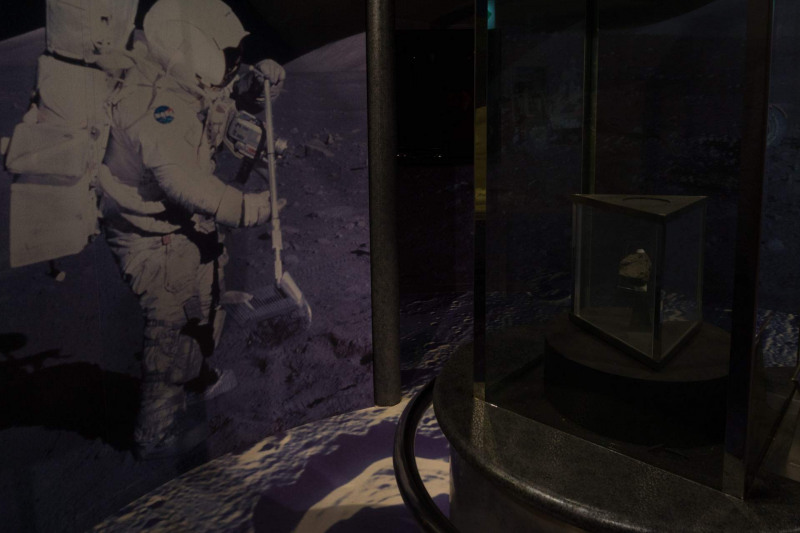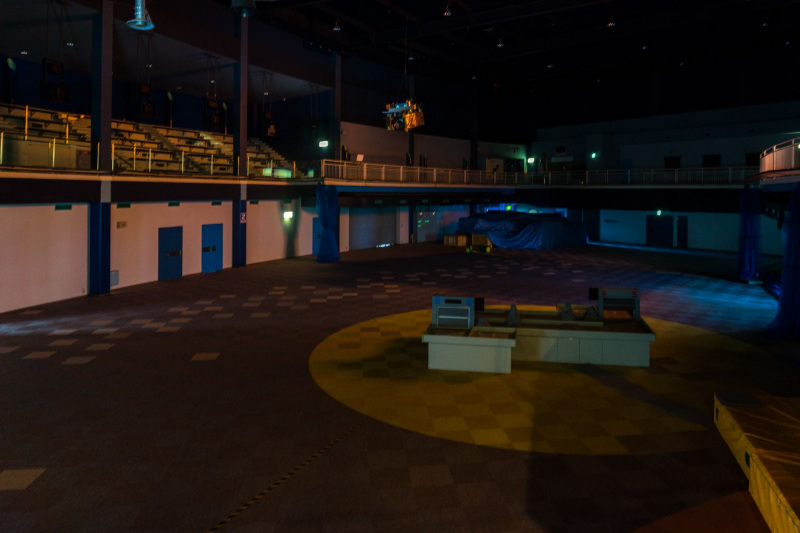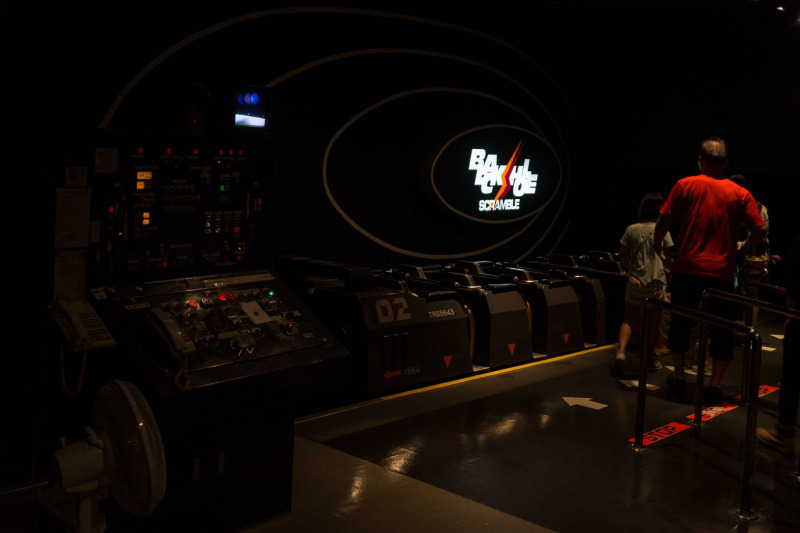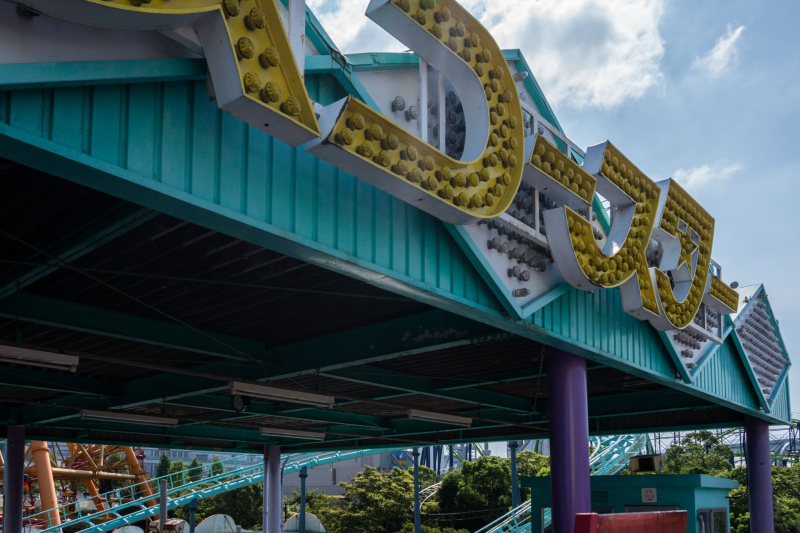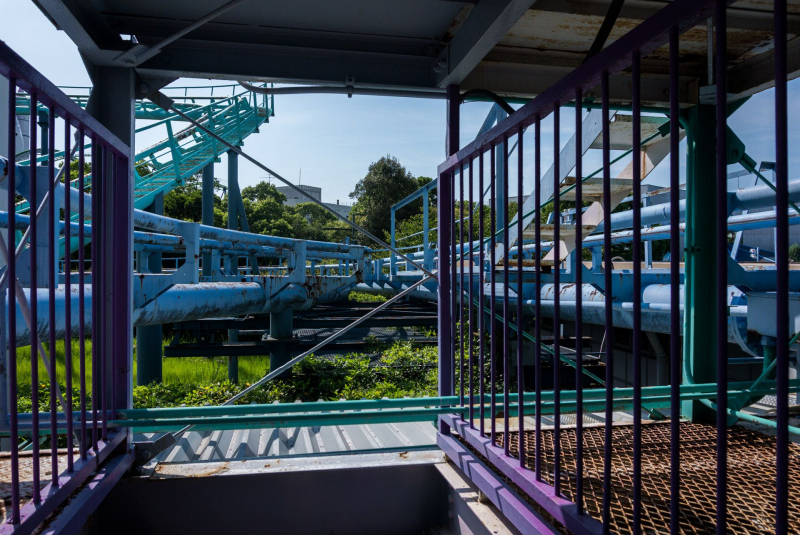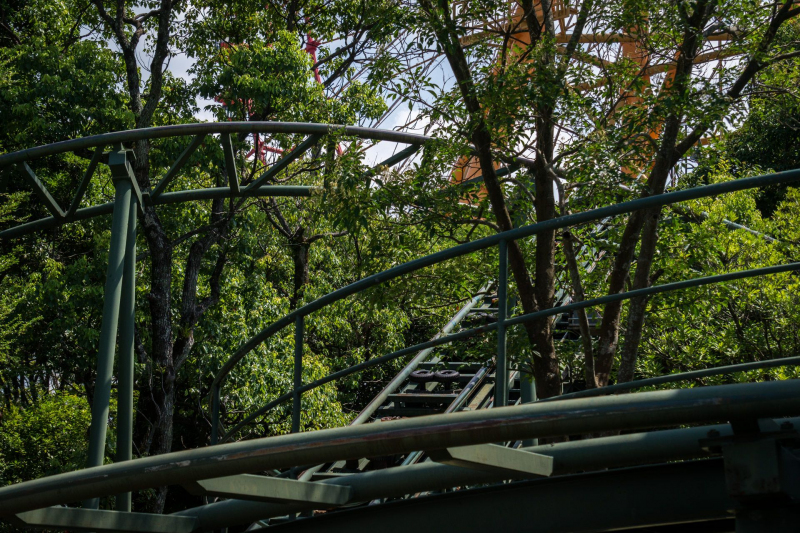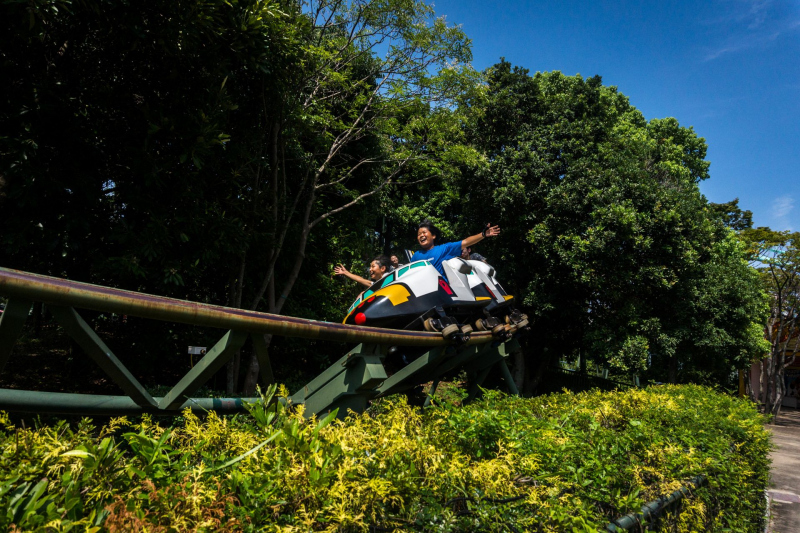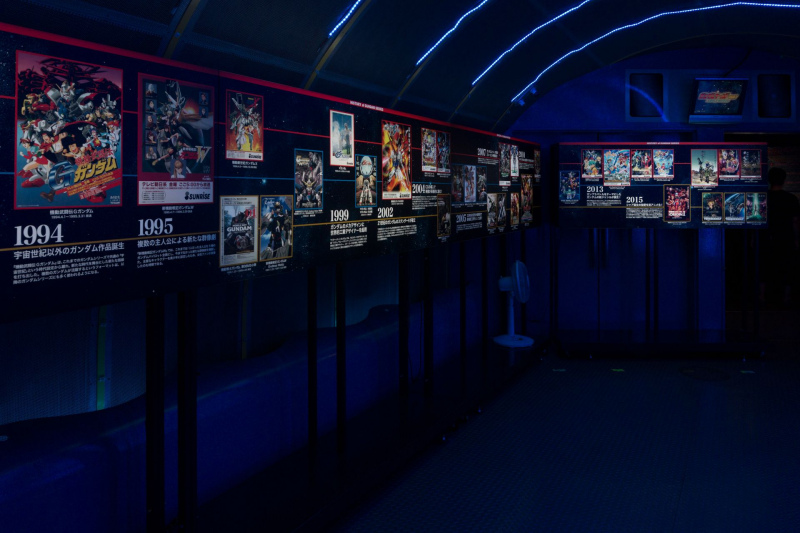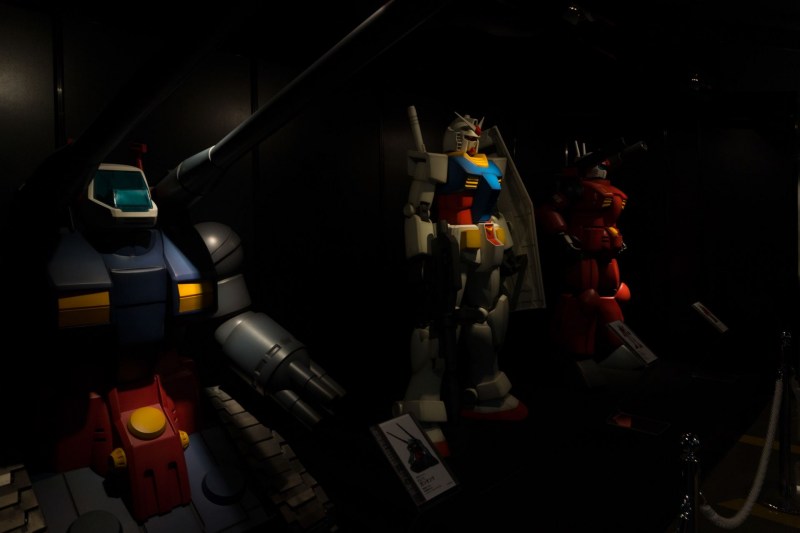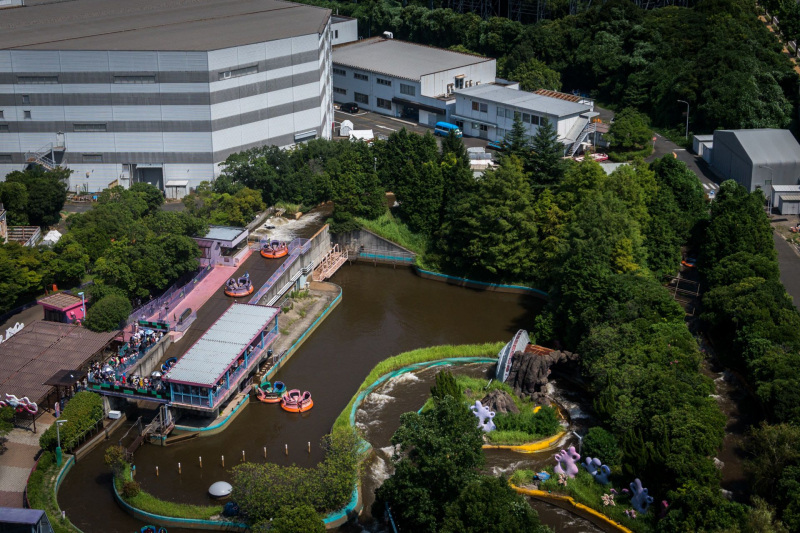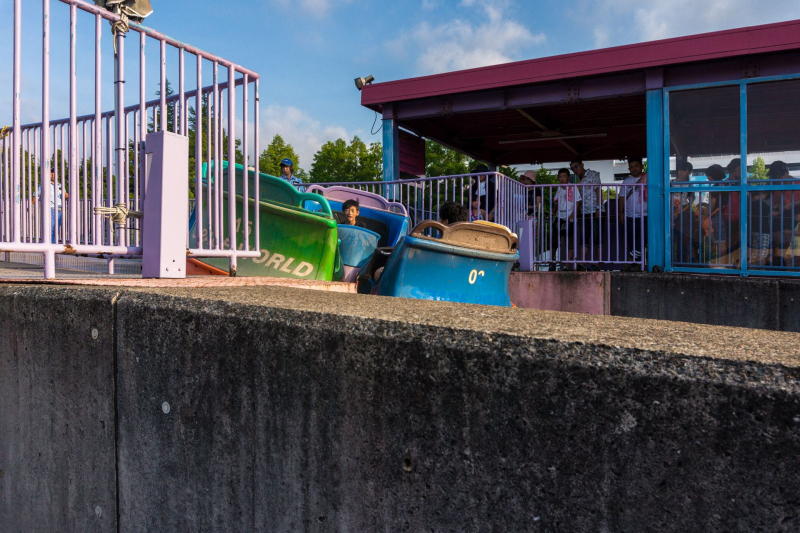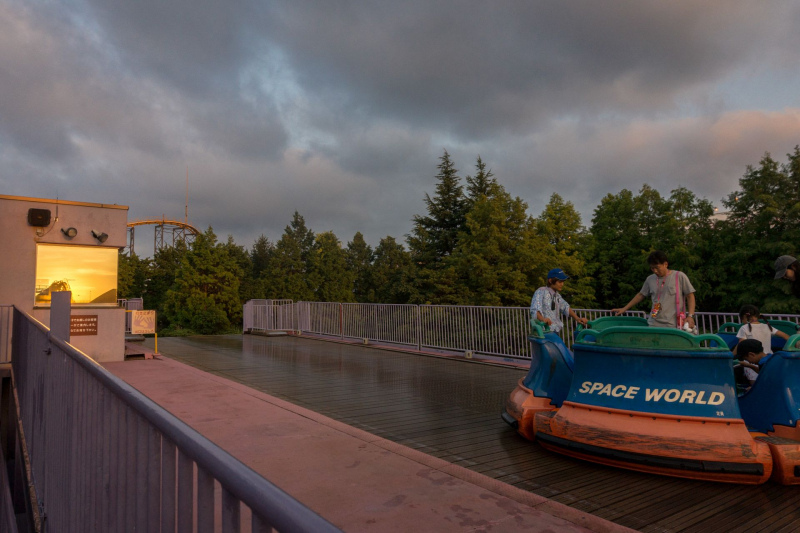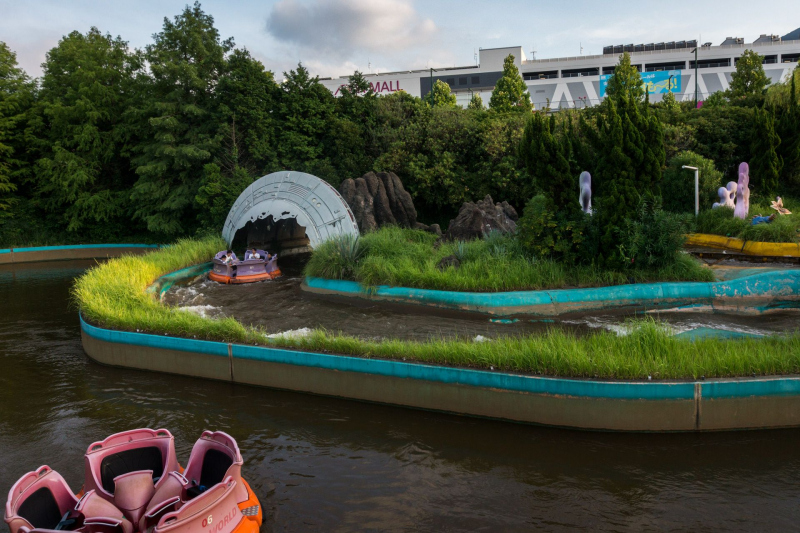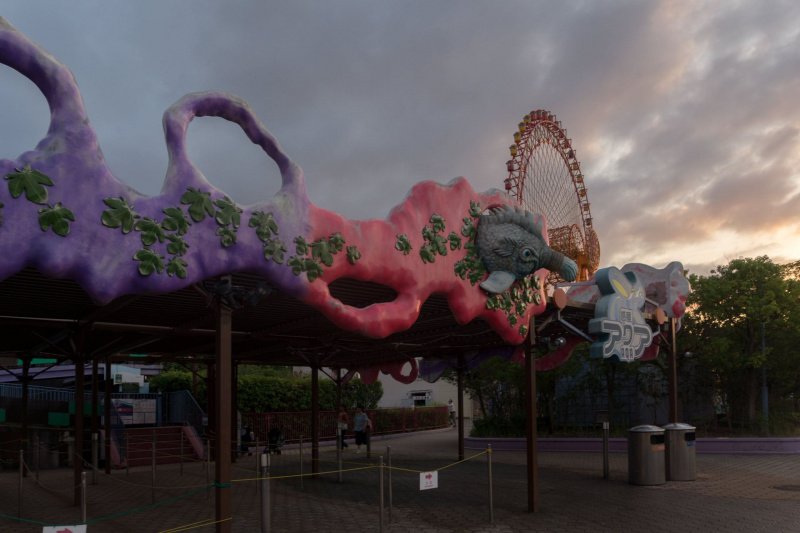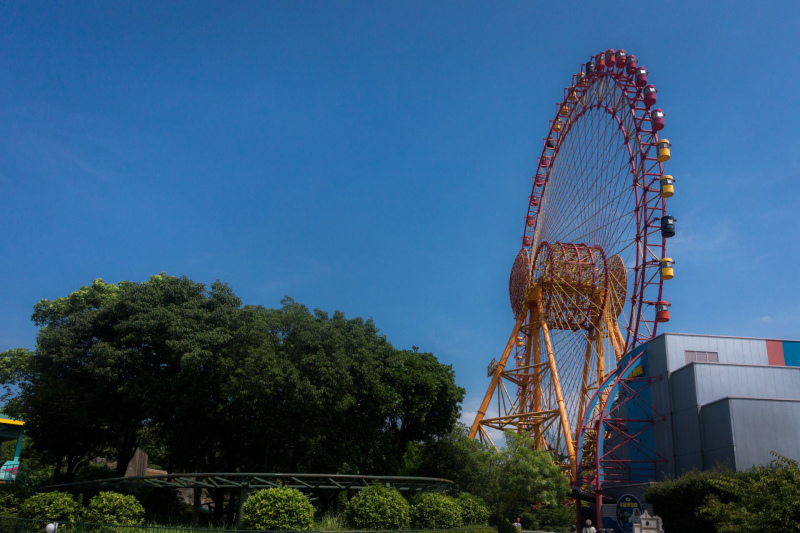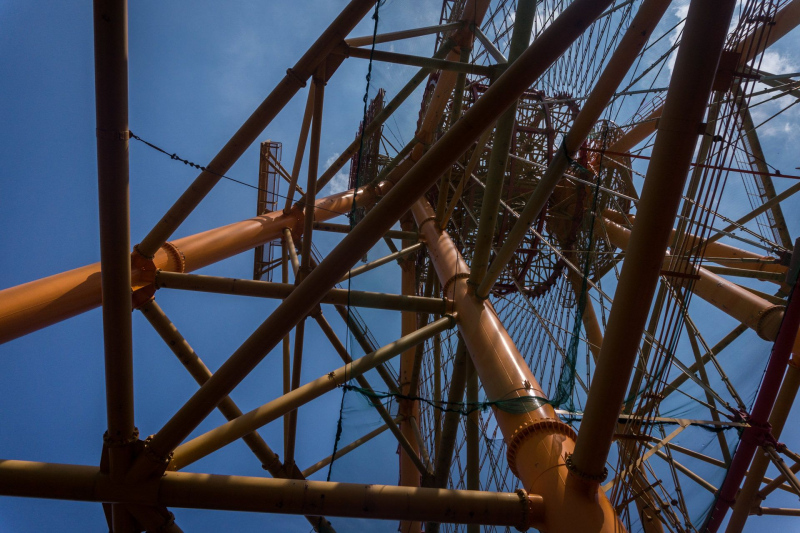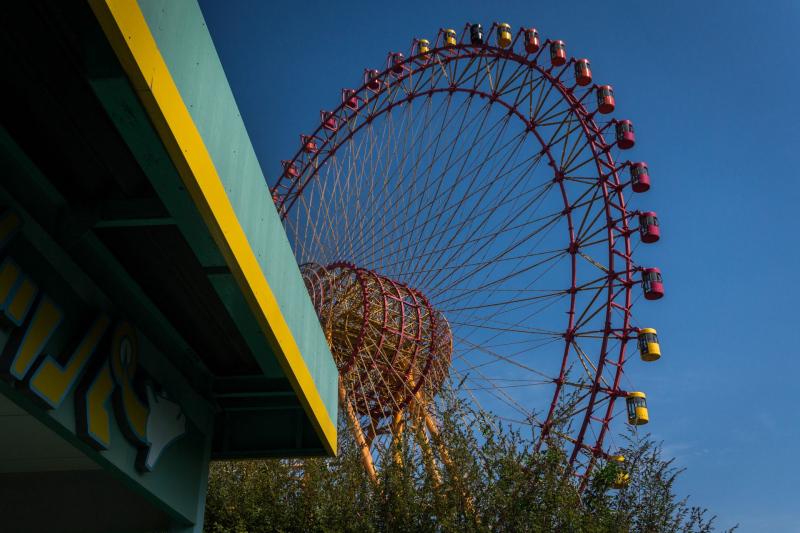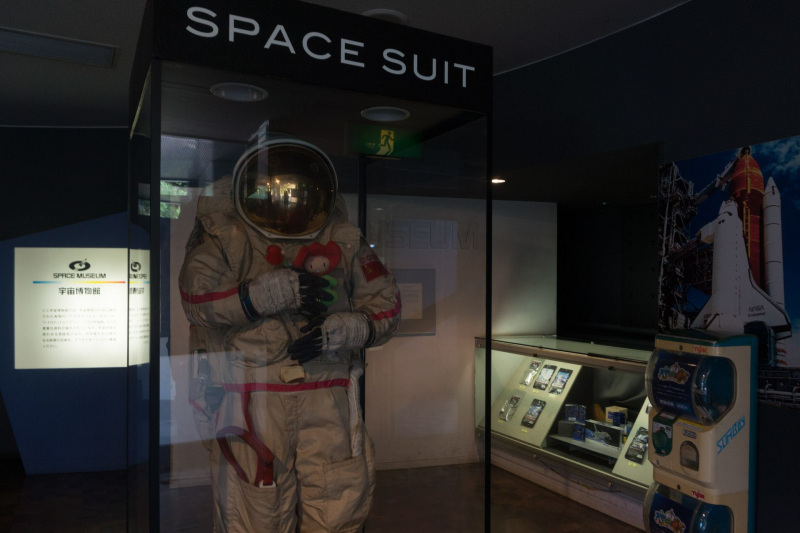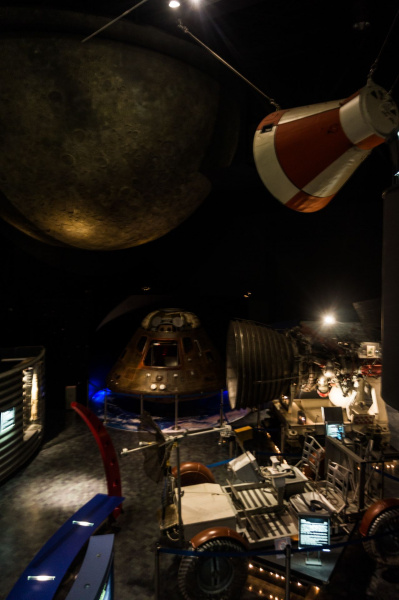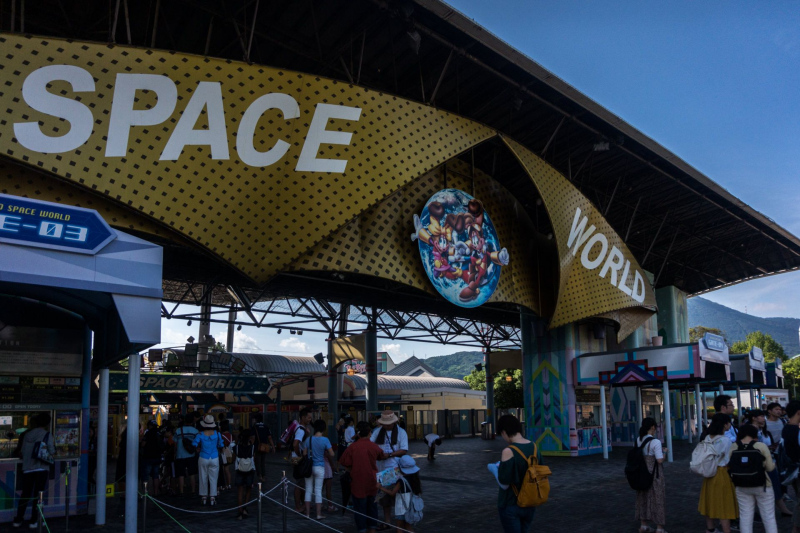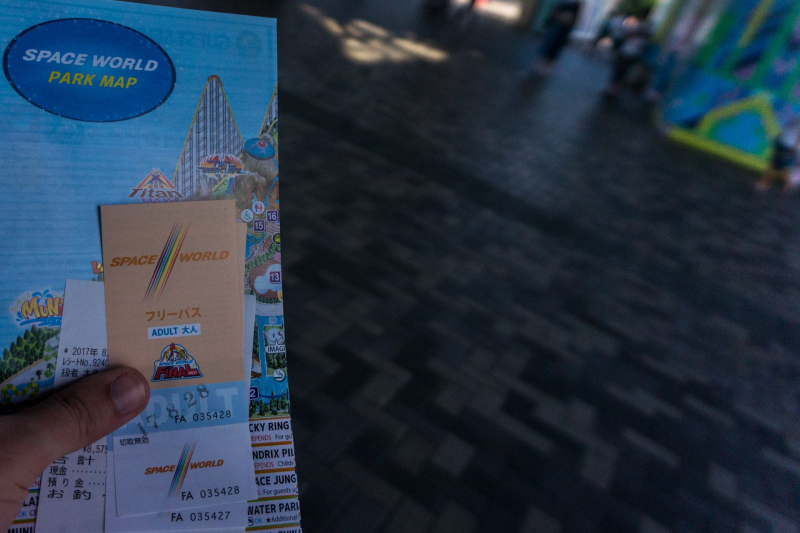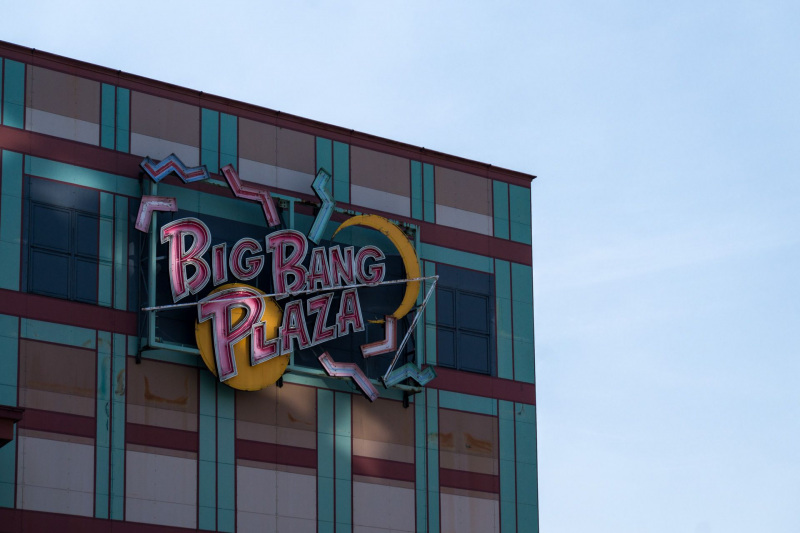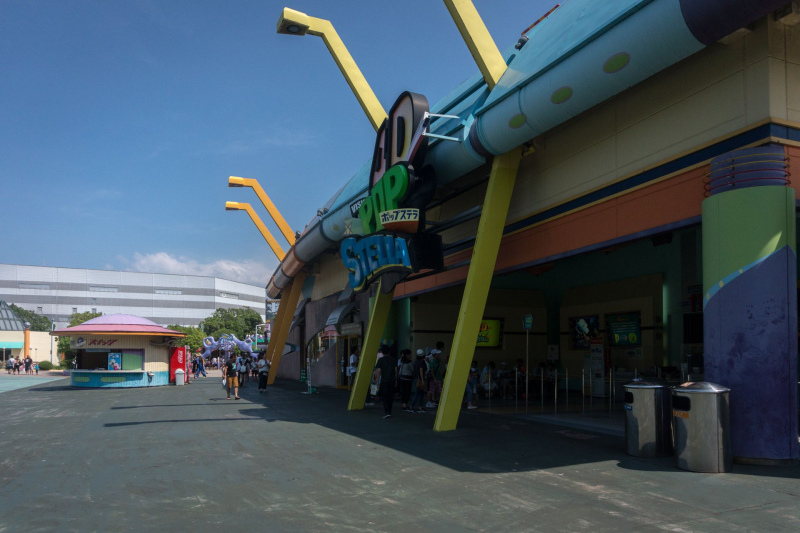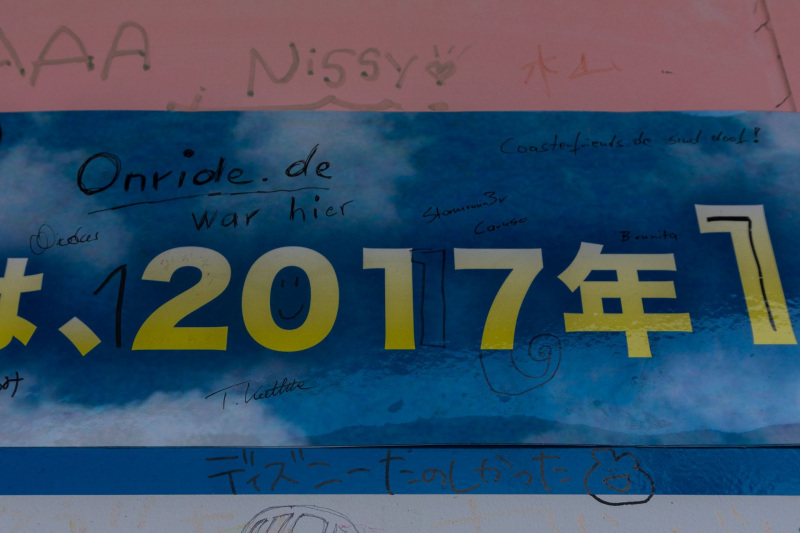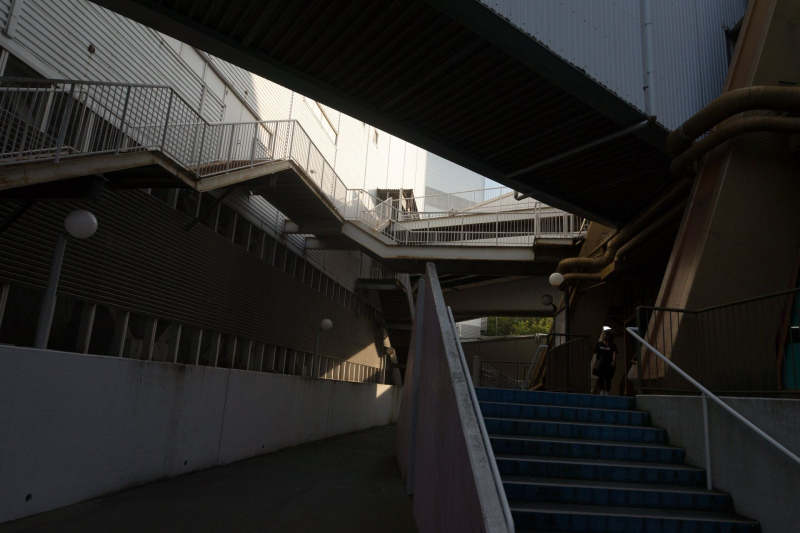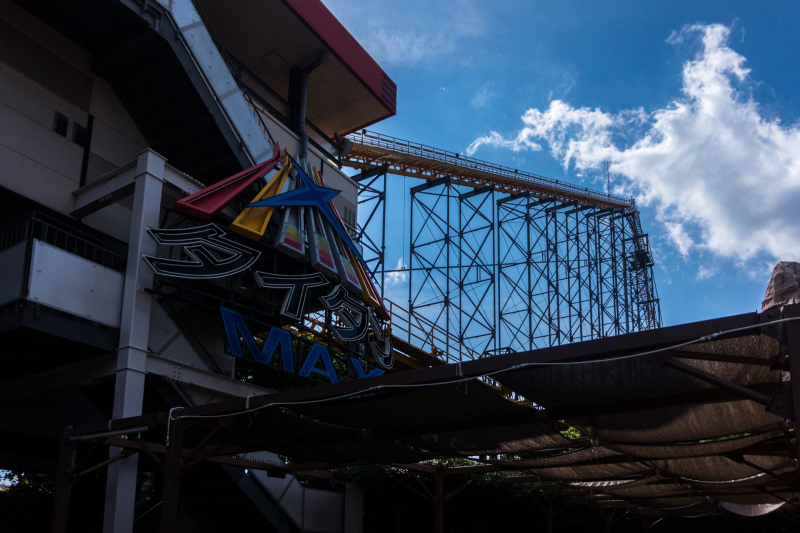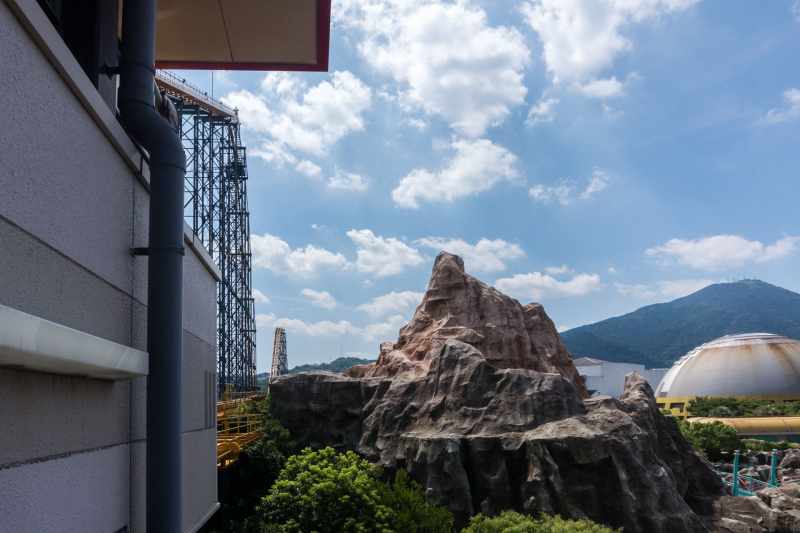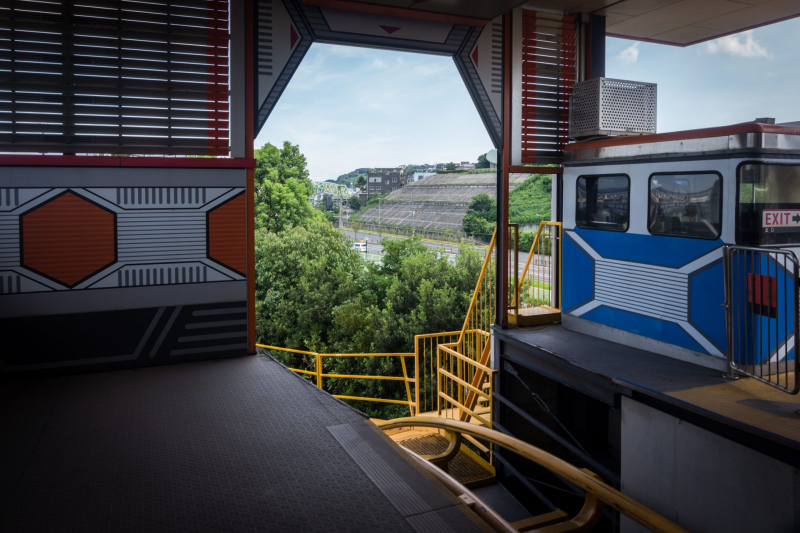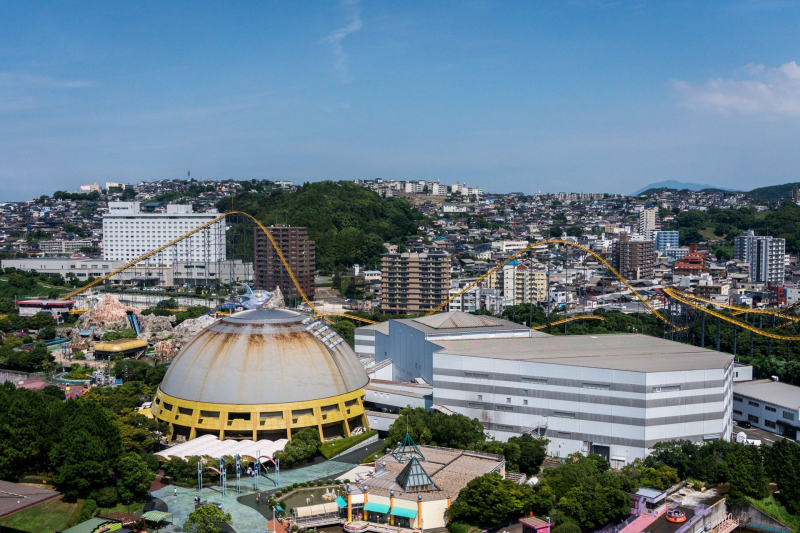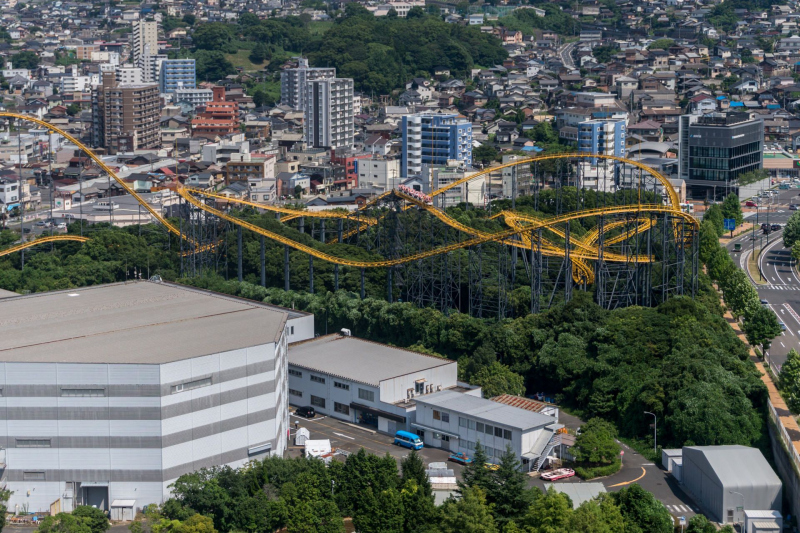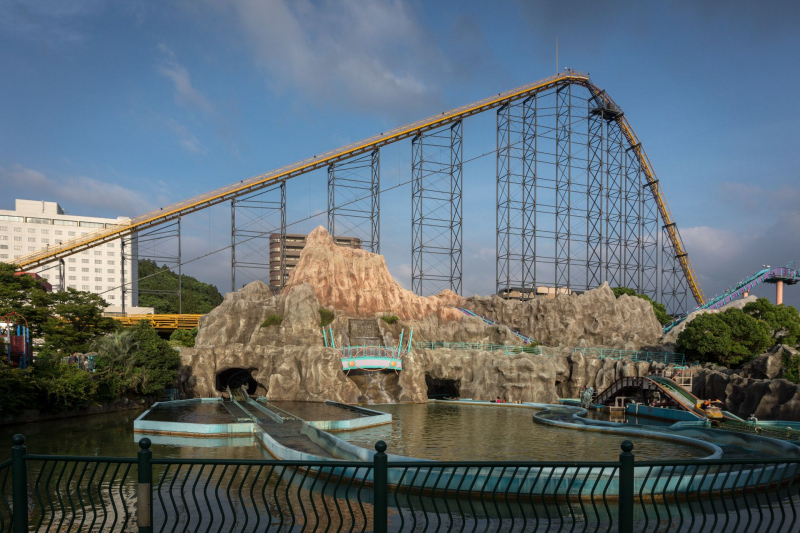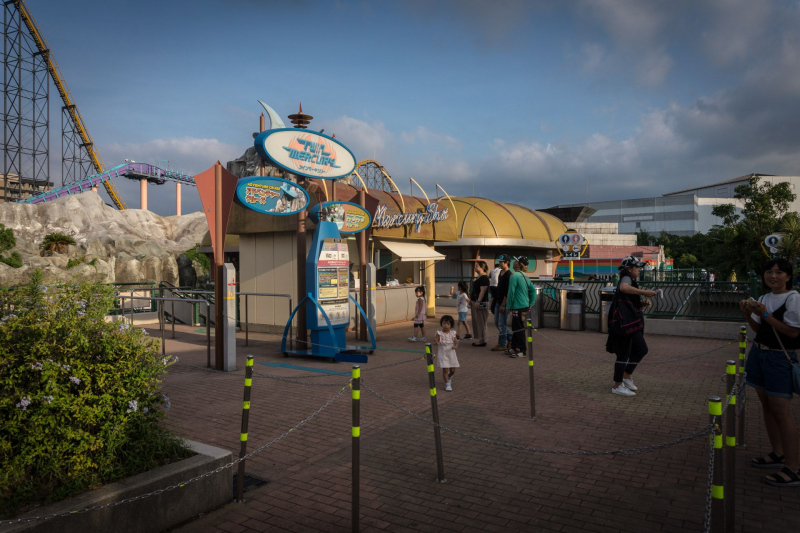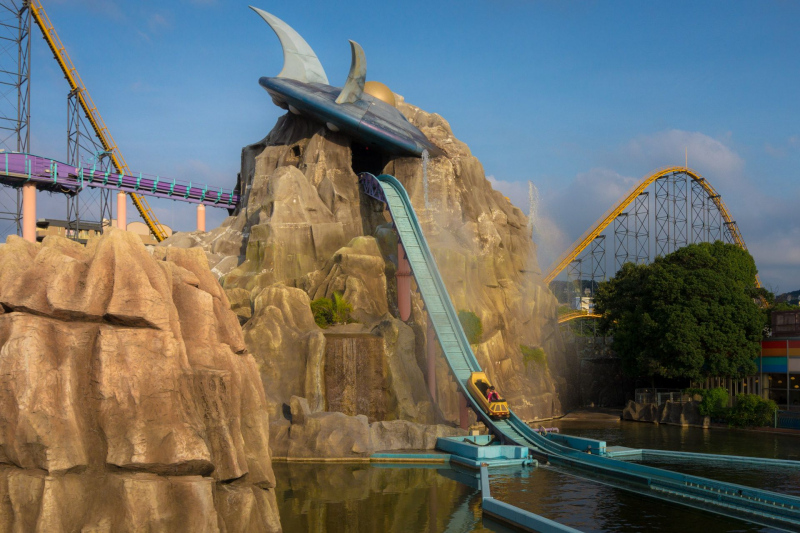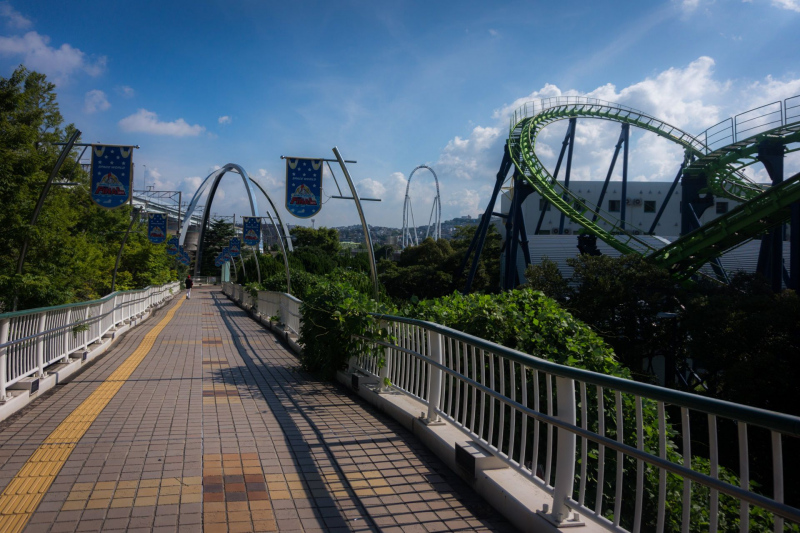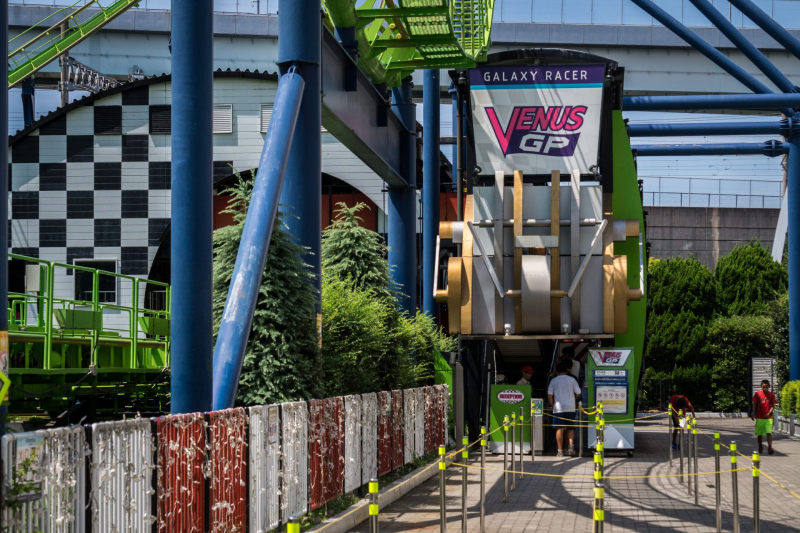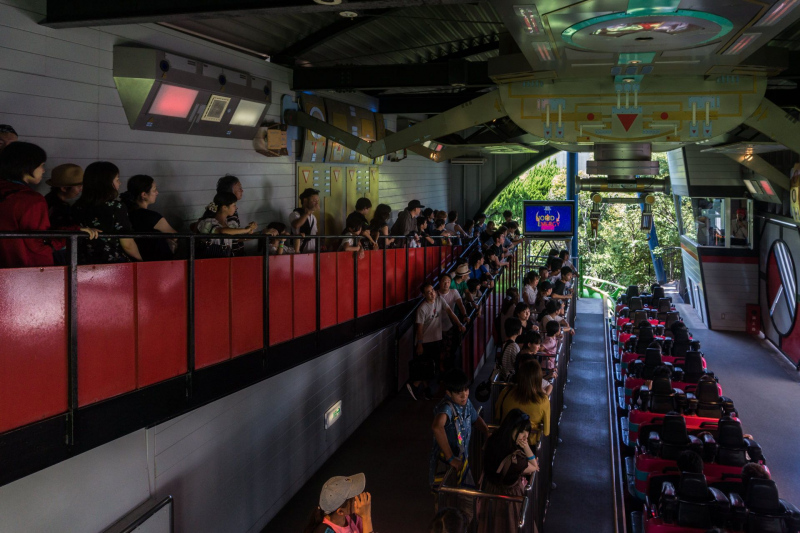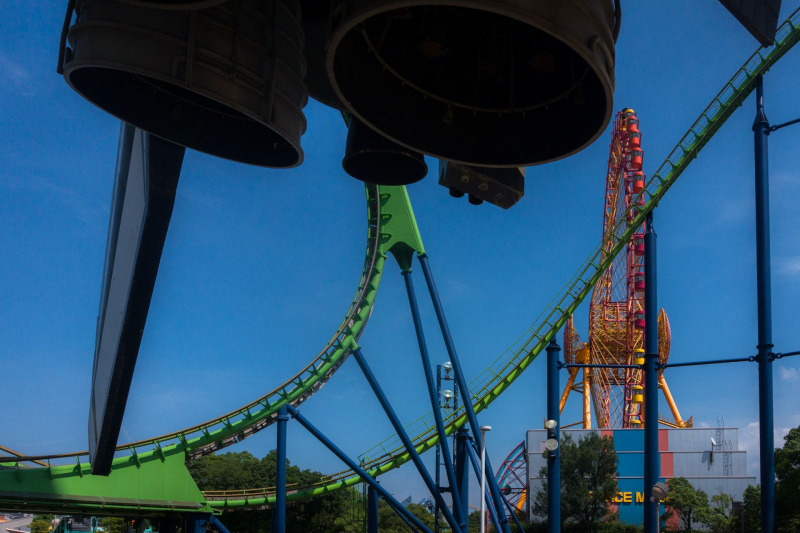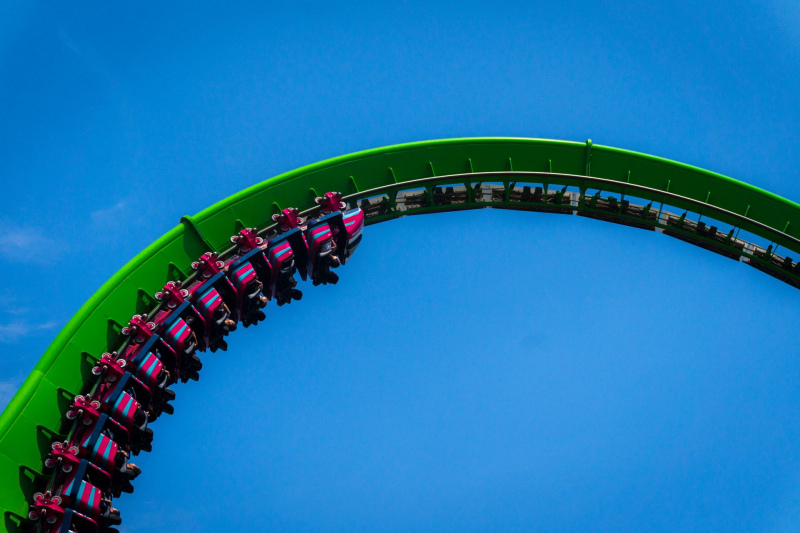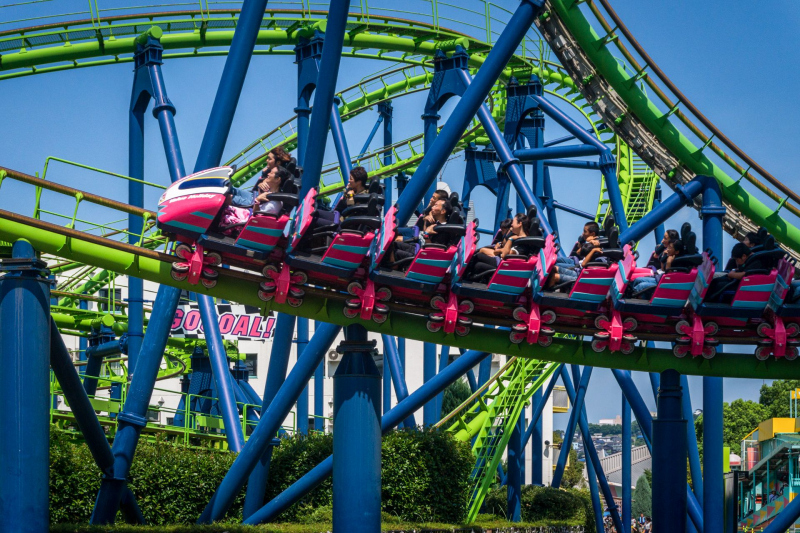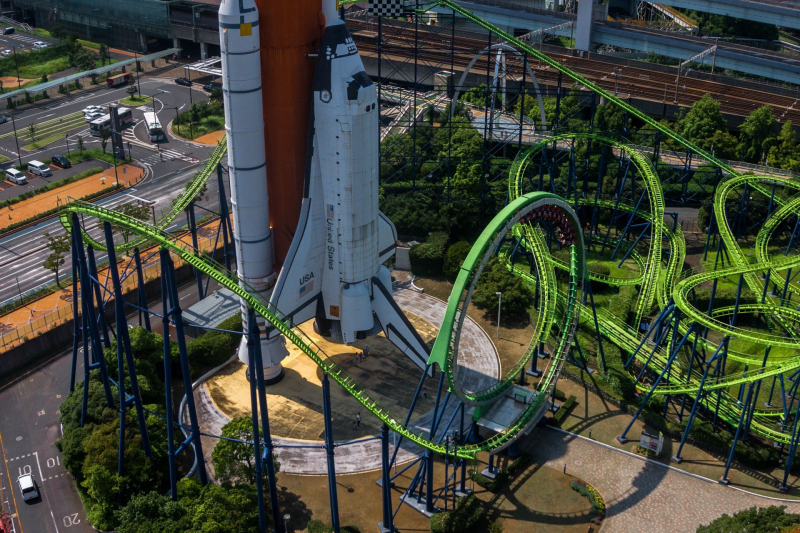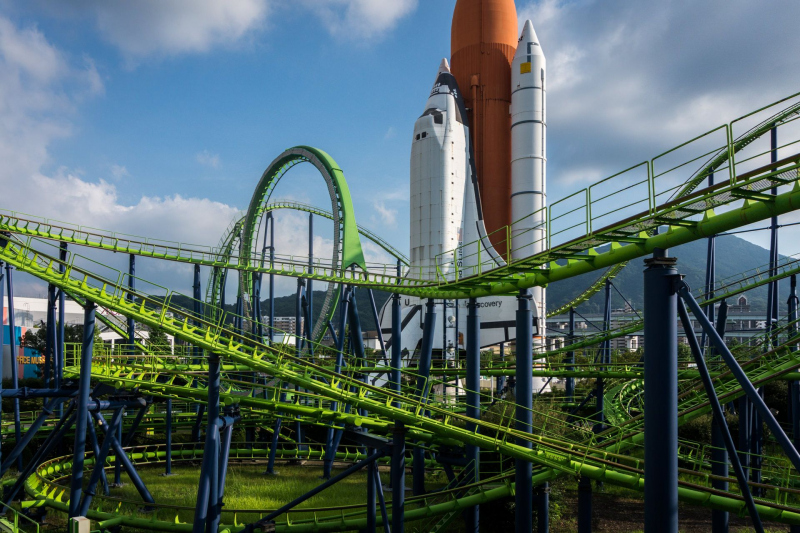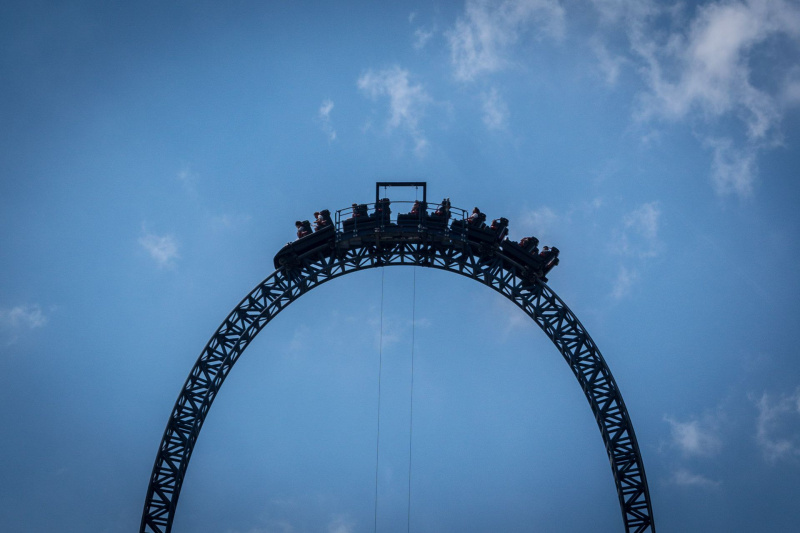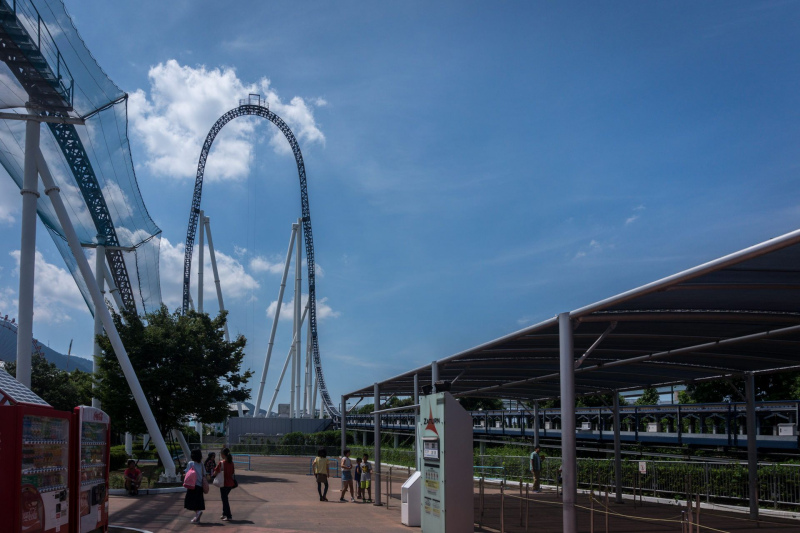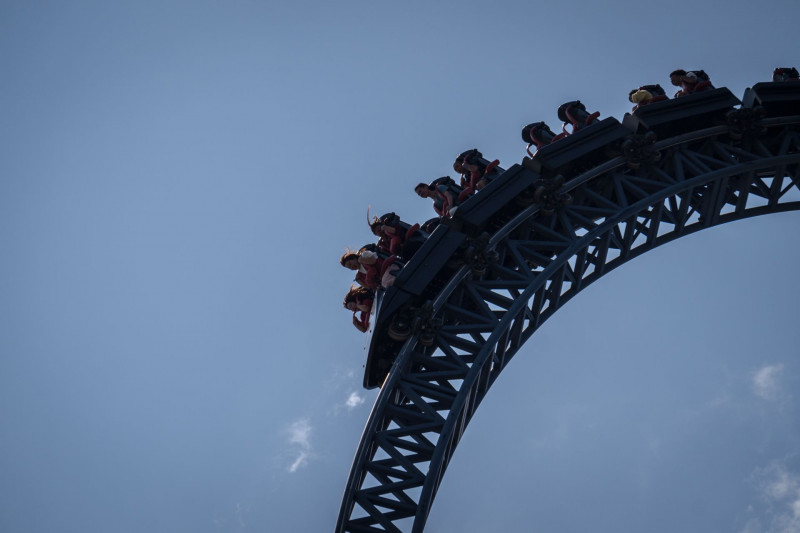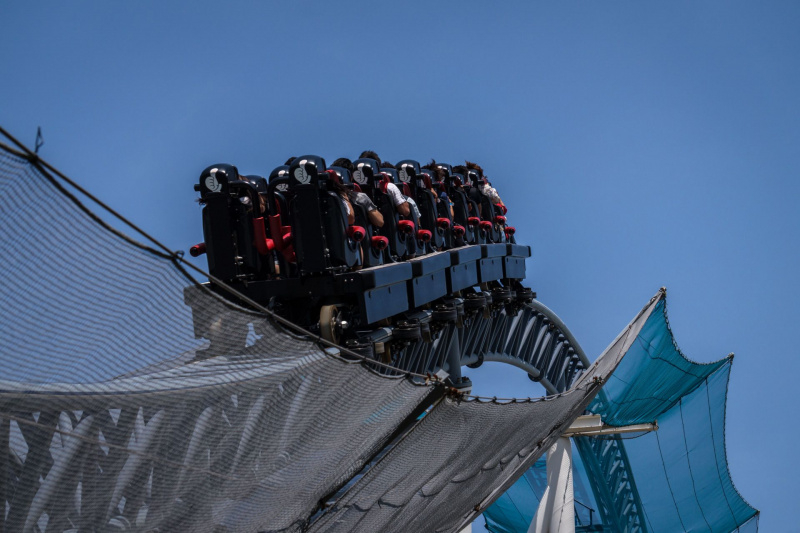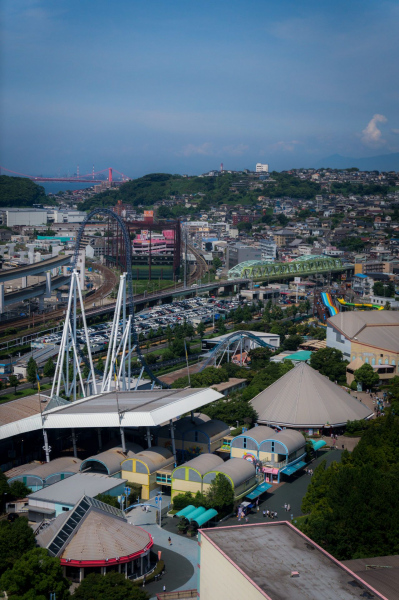History of the Space World
The amusement park Space World shows us in a very fatal way what fish frozen in an ice rink can do – despite record sales in the same year; whether the now internationally strongly criticised action towards the end of last year led to the collapse of the lease negotiations between the operating company Japan Park and Resort Co, Ltd. and the Nippon Steel & Sumitomo Metal Corporation (NSSMC) as the property owner is indeed written in the stars, but it is obvious, since it took place immediately afterwards: On 16 December 2016, it was announced that the theme park would close on New Year’s Eve the following year.
Before I move on to the #FinalYear celebrations, I would like to take a look at the history of Space World, because the land owners were once the main shareholders of the operating company and founders of the theme park. They were in the process of downsizing their local steelworks, which is why Japan Park and Resort Co., Ltd. was founded in 1988 to manage the vacated land and parts of the existing buildings in the future. Two years later, Space World was opened.
From then on, the amusement park was sensibly expanded at regular intervals. In 1997, the park reached its peak with 2.16 million visitors. A serious accident on the S&S Space Shot Atlas Tower, which had opened the previous year, led to the temporary closure of the amusement park in August 1998, whereupon visitor numbers also plummeted. Despite the opening of its own JR station and a 100m high Ferris wheel, visitors remained at a constant level, which is why the theme park was restructured in 2004. From then on, Kamori Kanko Co., Ltd. (operator of the Rusutsu Resort and Himeji Central Park, among others) became the sole main shareholder of the operating company. All kinds of redesigns followed, as well as the opening of the Zaturn launch coaster. At the same time, however, some rides were closed and the Astronaut Training Centre (Astresta), operated under the Space Camp Foundation licence in connection with Space Camp Japan, was abandoned. In 2008, the attraction was enhanced for the last time with the addition of a water park.
The end of the story is known and yet it is celebrated. Honestly, I don’t want to know how many desperate roller coaster and theme park enthusiasts have been drawn to Kitakyūshū this year and will be drawn after this report is published. At least one thing is certain: the time to experience this extraordinary amusement park is dwindling. Tick, tock.
Tour of the park
Clipper
After passing through the generously designed portal, we immediately find ourselves on the Space Bazaar, the main street of Space World. From here, we turn right towards the Big Bang Plaza. Passing the huge show theatre, the anime museum Gundam World and the Astresta Hall – which is empty except for a meteorite and some moon rocks – we head towards the roller coaster Venus GP, which we already marvelled at on the way to the Space World. But shortly before that, we turn left and queue up for the children’s roller coaster Clipper. Because let’s face it, you’re certainly not that interested in a roller coaster from Germany in a report from Japan if there’s also something from Togo. With this in mind, let’s get into the small, extremely cute spaceships.
The ride on Clipper begins with a small right turn that leads the spaceship train directly into the ride’s lift. A short time later we reach the starting height of 10m, whereupon the train immediately throws itself into a left turn. The train then climbs a shallow incline and turns to the right with a pronounced dip in the middle. In a shallow Bavarian curve manner, we float through a high double curve-interchange play before approaching the ground in a right-hand curve. Then, at high speed, we pass through a final left/right combination of curves towards the station. But just before reaching the station, a short dip awaits us, where on other rides of this kind the brakes would be located. All in all, this is a great little ride with a surprising finale that should be moved to another location in the near future.
Venus GP
A fate that will be certain for the neighbouring roller coaster. After all, Venus GP is one of the first roller coasters of the Munich-based Maurer AG, which shortly before took over the roller coaster division of the Bayerische Berg-, Hütten- und Salzwerke AG (BHS for short), which in turn took over the production of already commissioned roller coasters when Schwarzkopf of Münsterhausen went out of business. To sum up: Venus GP is a genuine Schwarzkopf product, just not from Münsterhausen and certainly not from the manufacturer. But that doesn’t interest anyone, given the external values of this snazzy ride: A height of 40m, a total length of just over one kilometre, a total speed of 86 km/h and an extremely twisty layout speak for themselves, don’t they?
In any case, the staging of the ride with the boarding to the beat of the Queen classic “We will rock you”, the scream rehearsal before the start of the journey and the ear-catching station music when the train is just whizzing along the track makes this a special experience. In any case, time flies by and before you know it you’re already on the train.
This is then also quickly dispatched, whereupon we leave the station in the direction of the lift hill. After a left turn, a chain takes us up to the starting height of 40m. Once at the top, there is a short moment to enjoy the view before being plunged full of anticipation into the depths on the back of the space shuttle Discovery. With the speed now built up, we climb a high banked turn before entering the almost circular loop with pinpoint accuracy. In the finest S-curve manner, we rapidly gain height, whereupon the train just barely scrapes past the lift hill in a tight curve. The train then crashes to the ground and reaches the lowest point of the ride. Mercilessly, the train turns around another bend, crosses the heads of the willing park guests and the station at a lofty height, and almost madly throws itself to the ground again. This is followed by an extremely rapid section of track in the form of a figure eight, which is followed by an intense upward helix. At high speed, we now go through a wide left-hand bend, which immediately turns into a downward helix. Shortly afterwards we reach the braking section and soon the station.
I have to admit, Venus GP sounds like the perfect roller coaster: powerful, brutal and merciless. During the ride in the Galaxy Racer, you only go through crisp curves and a beautiful loop – there is actually only time to breathe during the ascent in the lift and in the final brake. But why does my euphoria remain so low?! The answer is simple: the restraints!
In addition to the normal lap bar, the ride has shoulder claws à la Olympia Looping, only in extremely crappy. Well, the ride on the Olympia Looping is already a drastic experience due to the (more harmless) variant – but you can endure that if you strictly adhere to the given seating position. With Venus GP, on the other hand, you should give up hope of that as soon as you get in. This is how you experience the extremely appetising track layout with the constant fight with the bar – not pleasant, but the ride is actually top class.
Space Shuttle Discovery and the Space Museum
Let’s now turn our attention to the remaining edutainment offerings of the theme park, i.e. the replica of the space shuttle Discovery on a scale of 1:1 – which is extremely impressive in itself and makes the space station above the queue of the roller coaster Euro Mir at Europa Park look old without any effort – and the Space Museum. The former clearly has the advantage of not being overlooked by visitors, while not a soul gets lost in the well-made museum. Interestingly, an irrelevant anime was shown in the museum’s own screening room and some of the rooms were no longer open to the public – in the early years of Space World, it was certainly once a great attraction, which could actually continue to exist as an independent attraction in the future due to its location together with the space shuttle.
Boogie – Woogie Space Coaster
Past the Space Eye, the 100m high Ferris wheel of Space World – from which you have a great view of the neighbouring Venus GP roller coaster – we follow the path along the Boogie – Woogie Space Coaster, whose entrance is stupidly on the other side. Arriving at the entrance of the queue, you then have the choice between two backward and three forward facing cars. To increase the surprise factor of this little rust bucket a bit, the first ride was of course in the rear front row.
In a wide 180° curve, you leave the station in the direction of the lift hill. The lift then takes us slowly but surely to the top, where we are allowed to enjoy the view in another turn. On the following shot, in a tunnel through an oversized tetrahedron, we quickly gain speed, before the G force tries to kill us in the following valley, which is strangely inclined to the side. This in turn gives rise to a laughing fit that doesn’t subside until the end of the ride. Full of joy, we pass through the next turn, at the end of which a descent with a powerful valley is waiting. Finally, there is a grandiose downhill helix before one is guided in the direction of the station.
The Boogie – Woogie Space Coaster may not be a milestone among roller coasters, but from a ride-technical point of view it’s just great, which is why we were always happy to get on board. Especially the backwards ride adds a lot of value to this snazzy ride. Due to its condition, Space World will probably be the ride’s last venue – which is a shame.
Planet AQA
The situation is just as regrettable with the Planet AQA rapid river. This is the first product of the manufacturer Hafema. In spacious 10-person boats divided into 5 segments of two people each – which, however, due to the Japanese mentality are only loaded with further groups of people if the first group admits to it – you wind your way, after a long wait, through a channel full of rapids. The ride is similar to that of the rapid rivers made by Vekoma, which makes for an extremely interesting, albeit less thrilling, ride.
4D-Vision Pop Stella
If you do get a little wet, you can get a free blow dry in the drying rooms next to the ride. A slightly different solution would be a visit to the cinema room of the 4D-Vision Pop Stella, where a BBC nature film with all kinds of effects is shown. Here you can experience the daily routine of a chipmunk.
The next attraction on our tour is in the central building complex, which is probably a remnant of the former steelworks. Although you always walk past it, it can happen that you never look inside the building – which we felt compelled to do only when we were looking for the last roller coaster; luckily, however, we knew how many roller coasters there actually are in Space World.
Mission to Mars
In the building complex itself, visitors are greeted by the ice skating rink, which is open in winter, a children’s play area, the Black Hole Scramble indoor roller coaster and the Mission to Mars Imax simulator. After a long pre-show in which the rescue mission is discussed, you board the large-scale simulators and then get a surprisingly stomach-friendly shake.
Black Hole Scramble
The main attraction in this area, however, is the aforementioned Black Hole Scramble indoor roller coaster. After taking a seat in one of the two six-passenger cars, the ride can start immediately. On the way to the first lift hill, you first pass two long straights, each of which is followed by a left turn. The following lift is climbed leisurely and releases you into another left turn. This is followed by a shallow descending straight where the train picks up speed a little. After a short ascent, a long right-hand bend follows, which immediately turns into a Bavarian bend and finally ends in a block brake. You leave this in a very tight right-hand bend, which shortly afterwards turns into an equally tight left-hand bend. After a short straight and another left turn, a surprisingly steep drop follows, after which the subsequent (also very narrow) right turn is traversed with a lot of pressure on the body. Shortly afterwards, you pick up a few metres of altitude again in lift hill no. 2. You then leave this in a right-hand bend, whereupon the train quickly gains speed on the following straight. After the subsequent right-hand bend, the train performs a short dip, whereupon the next right-hand bend is already waiting for you. After this, you climb a comparatively high ascent, which first releases you into a block brake and then into another right-hand bend. This is followed by the second major drop of the roller coaster, which then releases you into the final left turn and shortly afterwards into the braking section.
Even though the indoor roller coaster seems to consist only of tight curves and a few straight connecting sections, Blackhole Scramble is a true indoor roller coaster of Japanese design, which offers a lot of fun in a very small space. So much, in fact, that I would call it one of the best of its kind.
Twin Mercury
The log flume duo Twin Mercury also falls into this category, where you can either go on the Adventure Cruise or the Fun Fun Cruise. While the Adventure Cruise is meant to appeal to the more courageous passengers, you can let off steam with water pistols on a more leisurely ride on the Fun Fun Cruise. However, as we stood our legs in the queue for the Adventure Cruise due to the minimal number of boats, we refrained from taking any further rides.
When it was finally our turn, we boarded the boat and the ride could begin. After a few metres of bobbing around in the channel, the conveyor belt of the first lift hill was already waiting for us, releasing us into the opulent mountain massif. After a short left turn, it becomes increasingly darker and light effects appear. After these are extinguished, you can only hear the water flowing faster and faster, so a drop is imminent, the only question is when. Suddenly you shoot down into the depths, but the water doesn’t come, instead you dash over a small hill and experience a shallow airtime before you finally come into contact with the cool water. Through openings in the façade, we can now recognise the course of the track and so we bob up to the second lift, quite surprised. This quickly brings us towards the second shot, which is completed in the form of a 500° downward spiral – an absolutely magnificent spectacle. Very well moistened, we now bob past the downhill of the Fun Fun Cruise and immediately disappear once more into the rock massif. After a right turn, we reach the third and final lift of the Adventure Cruise. Having reached the highest point of the ride, we now cross the inside of a crashed UFO in a short right turn and soon enter the last descent of the ride. While we are descending, two water cannons are fired in parallel, so that we get in contact with most of the water already during the drop, while the actual watering is relatively harmless. Shortly afterwards we reach the station again.
The Adventure Cruise of the Twin Mercury is undoubtedly one of the best log flumes in the world. The descents are all magnificently staged, whereby the drop in the inner area is an absolute surprise and almost knocks the second shot ride off its throne. This one is known for its unorthodox shape and the resulting, almost absurd, length. In combination with the Fun Fun Cruise children’s whitewater ride, Twin Mercury offers a unique combo that will soon be a thing of the past.
Titan Max
As much as most likely the Arrow roller coaster Titan Max, which was refurbished in 2015. A roller coaster that I was personally very much looking forward to and for which I read over all the negative reviews, because firstly, the ride was from 1994, the same year as the Big One from the Blackpool Pleasure Beach, and secondly, all roller coasters from the manufacturer are usually very good, but often frowned upon by roller coaster fans because of their rougher ride. Admittedly, it was not the reason to come here, but it was the deciding factor for the tour title Titanic Max.
After you have survived the extremely annoying queue including the continuous announcement from tape, you can climb the staircase up to the station and wait there for a few (many) minutes. Of course, Space World does not run at full capacity, so you can look forward to a freshly dispatched train every ten minutes. With 24 people per train, this is a capacity of 150 people per hour, instead of the 1500 people that were originally possible.
The ride begins with a short dip out of the station, followed by a tight turn towards the lift. This then brings us relatively quickly to the starting height of 50m, where the first drop is waiting for us. On the now existing height difference of 54m, the train accelerates to a speed of 115 km/h in a short time. The following valley is glided through smoothly, as is the subsequent camelback. In the second valley, the acceleration values are a little more pronounced, but again not worth mentioning. Now follows a highly banked curvy part with gentle gradients and climbs in the middle, something like a very long and rather shapeless Bavarian curve. After spending a lap in a triangle, the last curve narrows visibly, whereupon we turn to the block brake. This reduces the speed a little so that one crosses the following part with the required speed. Although the subsequent long ramp hardly makes it seem so, we are now approaching the highlight of the ride. The curve narrows increasingly to a radius where it is a miracle that the very massive Arrow trains could have passed through at all. But while the lateral acceleration values get out of hand, the train immediately plummets abruptly towards the ground. The valley that follows is wonderfully powerful and also features a very nice change of direction. The game then repeats itself in reverse order, whereupon the element in the form of a figure eight unfortunately comes to an end. A shallow ramp with an included left turn now leads us parallel to the first camelback of the ride, whereupon the return of the station is initiated. Here, three gentle hills then await the passengers, where one honestly misses the negative forces a bit. After a short kinky ascent, the final brake is reached and the ride draws to a close.
Unlike other roller coaster fans, I don’t want to complain about the ride characteristics, because they are absolutely fine. Personally, something else bothers me about the ride, because it is simply boring. There is only one element during the ride that stands out in any way, the rest is like a classic jet coaster and let’s be honest, the Japanese can do that much better than the Americans from Utah. All in all, the Meteor Liner with music selection is a nice roller coaster, but not one that I would queue for half an eternity for in the existing conditions at Space World.
Zaturn
The situation is different with the launch coaster Zaturn, where the waiting time never exceeded 20 minutes, despite the pull-in operation and safety briefing ritual. This is a clone of the Stealth roller coaster from the English amusement park Thorpe Park, which is why the layout is quickly told. After the pulse of the light show has subsided, the train accelerates to a speed of 130 km/h. The train then shoots up a 60m high top-hat and leaves it in the same direction from which it came. In the following valley, a vertical acceleration of 5G awaits you before the braking section is initiated on the following hill. After a bend, you reach the separate exit platform.
Zaturn is solid and, despite its short travel time of about 30 seconds, actually offers everything that is missing on Titan. But compared to Stealth, the ride is unfortunately a bit weak, somehow I missed the atmosphere or at least the spillwater that you drive under on the ride; but it may also be due to the minimally shorter acceleration phase on the minimally older sister..
Along the closed Galaxy Theatre and the Maze Alien Panic Revolution, which we spared ourselves due to the high number of visitors, the path now leads us back to the Space Bazar and thus to the end of this report.
Pictures Space World
Conclusion Space World
Space World is a good amusement park, but it has already left its best days far behind. This is evidenced by the many empty spaces, especially in the area around the Big Bang Plaza. On the other hand, the roller coasters (with the exception of the Boogie – Woogie Space Coaster) are well maintained, which is not surprising when they are temporarily closed during operation. Either way, it was a great day in an extraordinary amusement park, which we will soon be able to talk about with a good dose of pathos; after all, at Space World we don’t mourn, we celebrate.
What is your opinion about the theme park Space World? Just write it in the comment field below the report or visit our social media channels:
Click here for the next report of the Titanic Max Tour

